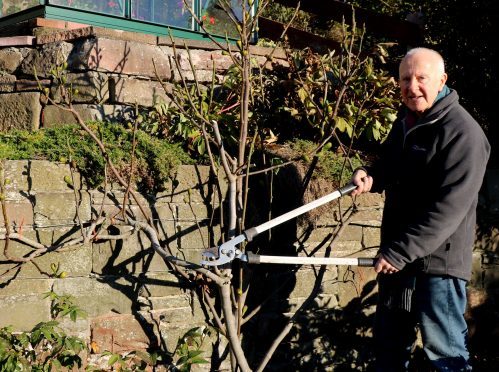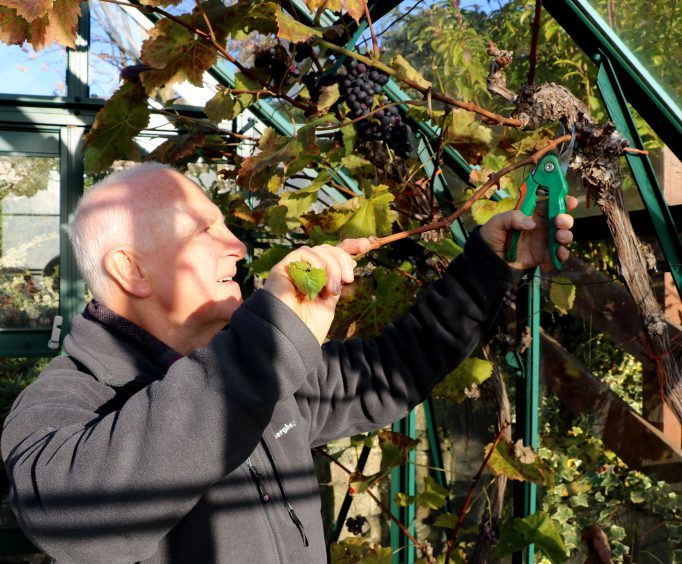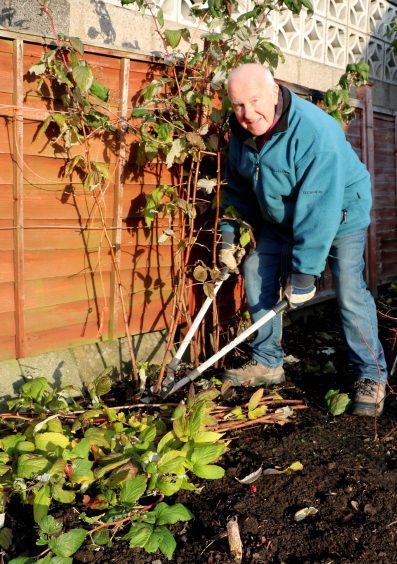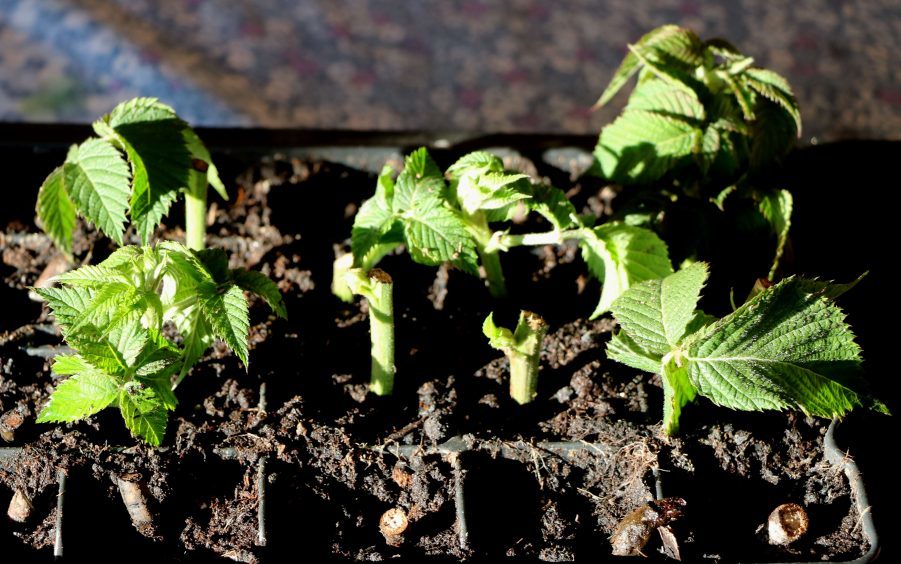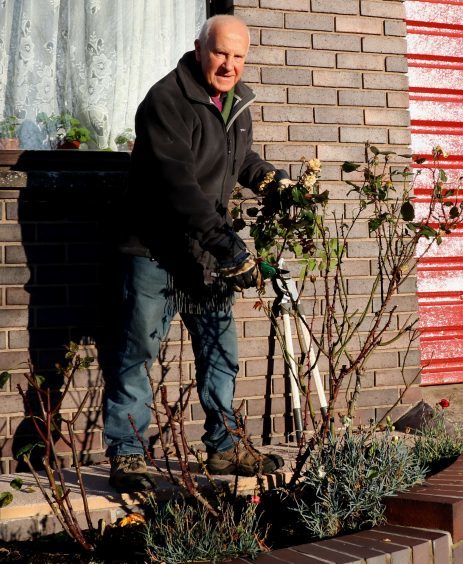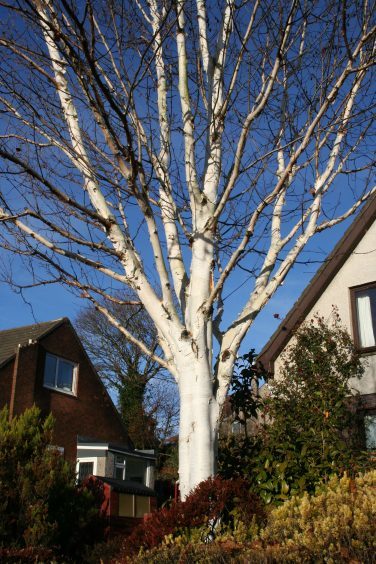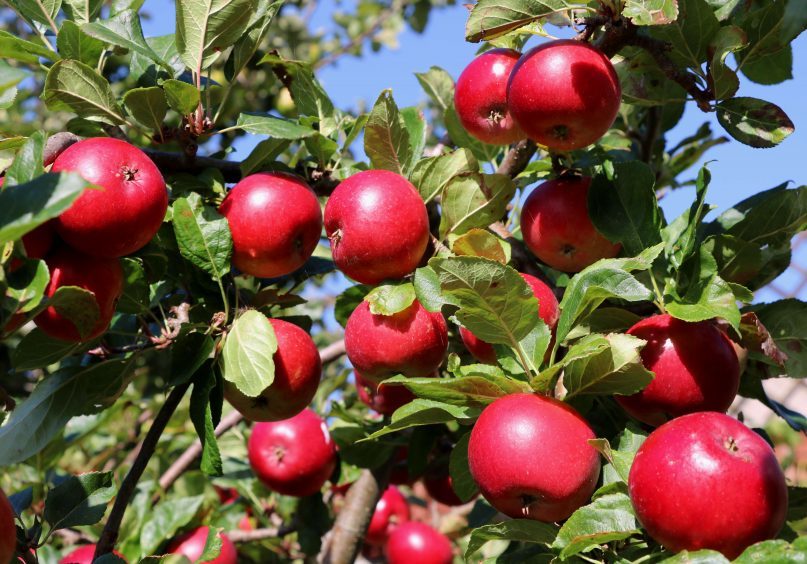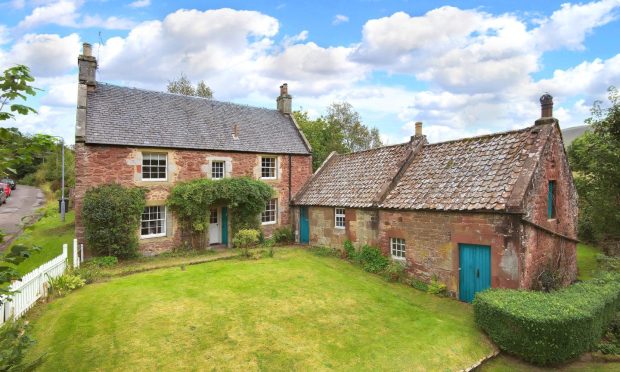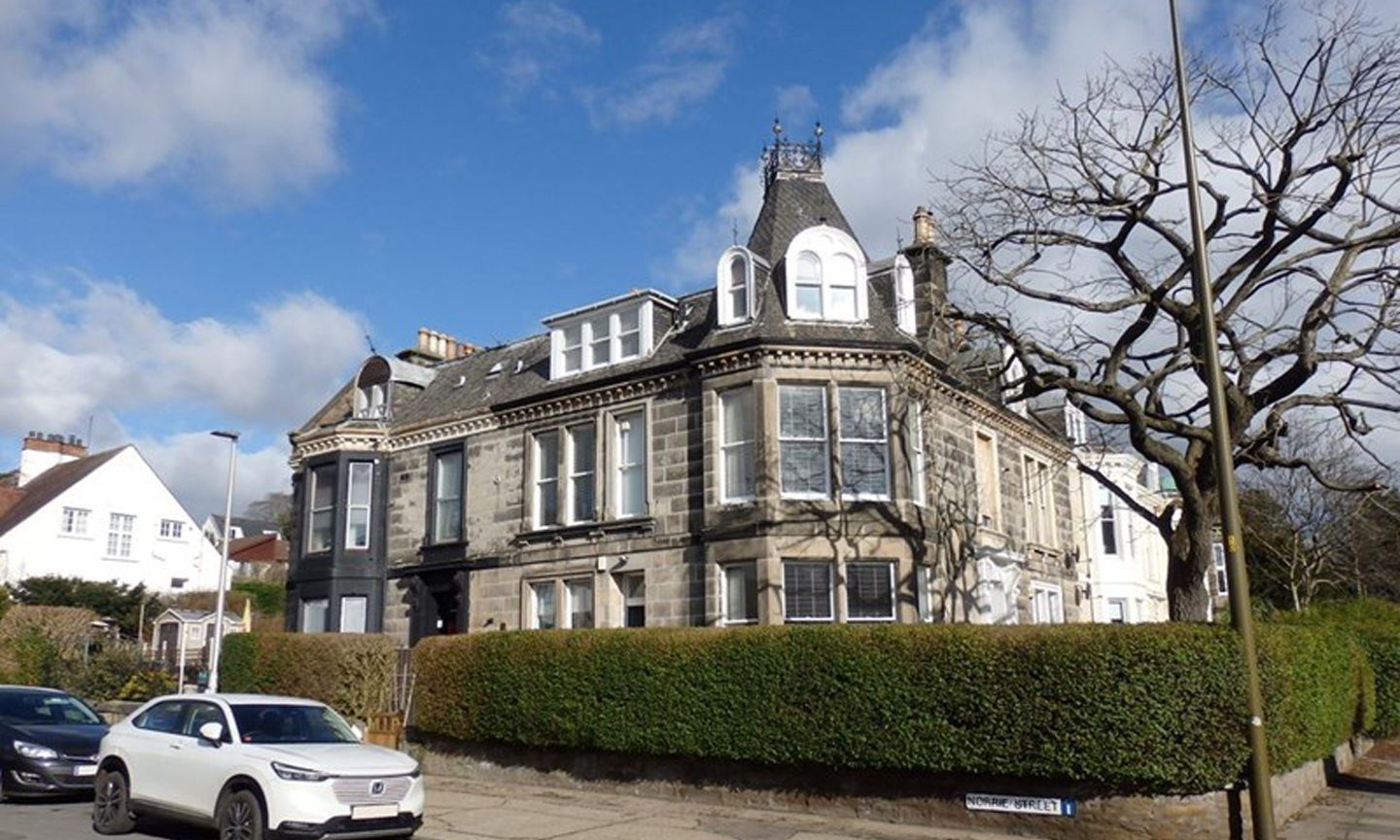Although summer may have been a washout for many of us the autumn has been remarkably dry so digging has been a treat as the soil was never wet for walking on and now as we start the pruning no damage is being done to the soil surface.
Pruning in winter is another task I try to complete before the end of the year.
Bush roses put on a late flurry of blooms in mid November but by the end of the month they had lost most of their leaves and were ready for the secateurs.
Autumn fruiting raspberries Polka and Autumn Bliss both decided to offer me some fresh and very attractive fruit before the loppers came out, but I am afraid their sweetness had gone so there was no reprieve.
On the allotment site I do all the pruning of trees, fruit bushes and roses at the same time, and then I can bring out our shredder for the wood and add the shreddings to my compost heap.
Raspberry Glen Fyne and Glen Dee are both summer fruiting so it only the old fruiting canes that we prune out at ground level, then the remaining canes that grew this year are tied in to the straining wires using a running knot, spacing them out about four inches apart along the top wire.
Autumn fruiting varieties are very easy as all the canes are cut back to just above ground level. New canes start to grow again in spring and these will fruit from late summer onwards.
Brambles are similar to summer raspberries as they fruit on the long shoots produced the previous year, so it is a matter of cutting out all this years fruiting wood.
The remaining shoots, still fairly green, will be quite long so normally they are looped between support wires to save space.
Gooseberries can be quite prolific croppers so pruning is done to remove branches too close to the ground to prevent soil splashing on the fruit, and pruning out some shoots growing in the centre to aid picking, especially on those varieties with wicked thorns.
Blackcurrants fruit best on young shoots of one and two years old so cut back any older branches to encourage more young shoots to grow.
Redcurrants fruit on spurs so I retain a framework of about nine main shoots growing up from the crown and all smaller shoots growing on these are cut back to a couple of buds.
However it is beneficial to replace two or three of these main shoots each year to keep the bush healthy.
Replace them with young new shoots as they appear near to their position.
Figs grown outdoors up north are usually planted against a south facing wall or fence so prune shoots growing too far away from the wall.
Also remove very low growing branches as these will produce figs that get eaten by slugs.
Apples and pears have very different pruning needs based on the form of tree as well as rootstock, and plums are similar but should not be pruned in winter due to the risk of infection by silver leaf disease.
Pruning will vary depending on whether you are growing a dwarf bush, large tree, cordon, espalier, stepover or fan shape so look up the pruning requirements as appropriate.
Grapes under glass are usually grown as upright rods spaced about 18 inches apart. These produce fruiting spurs about six inches apart up the rod.
The fruiting laterals grown from these spurs are cut back to one or two buds near the rod from which the next year’s crop will come.
Roses flower best on young shoots so always look to cutting out old shoots providing there is plenty of new growth to take their place.
Shrub roses get minimal pruning and climbers are the same as bushes but on a larger scale.
Birch trees grown as specimens with white bark need removal of lower shoots to expose the brilliant white stems that are very attractive in winter once all the leaves fall off.
Wee jobs to do this week
Blackberries can be propagated from cuttings taken from the ends of young shoots about four inches long placed in free draining compost to be well rooted by early spring. They can also be grown from root cuttings about four inches long laid just below the surface of compost in pots.
